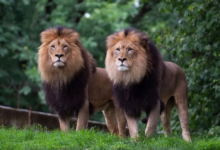The Impact of Thermal Imaging on Wildlife Conservation Efforts:

Thermal imaging technology is revolutionizing wildlife conservation by providing new ways to monitor and protect endangered species. Conservationists now use this technology to observe animals in their natural habitats without disturbing them. By detecting heat signatures, thermal imaging helps track movements, monitor health, and prevent illegal activities like poaching.
Tracking and Monitoring Wildlife:
Thermal imaging is crucial for tracking and monitoring wildlife. This technology allows researchers to observe animals discreetly, particularly nocturnal species, without disrupting their natural behaviors. The use of thermal monoculars provides a non-invasive way to gather critical data on animal populations and their movements, even in challenging environments. These devices can detect the presence of animals from a distance, making them invaluable tools for field research and conservation efforts.
Poaching Prevention and Anti-Poaching Efforts:
Thermal imaging has become essential in anti-poaching initiatives. Poachers often exploit the cover of darkness to hunt illegally, but thermal cameras can identify their presence through heat signatures. Conservation teams using this technology can patrol protected areas at night, responding quickly to any threats. The use of thermal imaging in this context has been instrumental in safeguarding endangered species and reducing illegal hunting activities.
Health Monitoring of Wildlife:
Another significant application of thermal imaging in conservation is the health monitoring of wildlife. Infrared technology can detect changes in an animal’s body temperature, signaling potential illness or injury. Conservationists rely on this information to provide timely care and interventions, ensuring that sick or injured animals receive the attention they need. This approach is particularly important for endangered species, where every individual counts.
Habitat Mapping and Environmental Monitoring:
Thermal imaging also plays a vital role in habitat mapping and environmental monitoring. By scanning large areas with thermal cameras, conservationists can identify critical habitats and assess environmental conditions that impact wildlife. This technology enables the detection of subtle environmental changes, such as temperature fluctuations or the presence of pollutants, which might otherwise go unnoticed. The data collected helps inform conservation strategies and the management of protected areas.
Rescue Operations and Emergency Response:
In addition to monitoring, thermal imaging is invaluable during wildlife rescue operations and emergency responses. Natural disasters, such as wildfires or floods, can displace or trap animals, making it difficult for rescuers to locate them. Thermal cameras provide a rapid and effective way to find animals in distress, even in low-visibility conditions, facilitating timely rescue efforts and safe relocation.
Future Prospects of Thermal Imaging in Conservation:
The future of thermal imaging in wildlife conservation is promising, with ongoing advancements enhancing the technology’s capabilities. As thermal imaging devices become more accessible, their application in conservation efforts is expected to grow. New developments may include more sophisticated thermal sensors with greater sensitivity and range, further improving the effectiveness of monitoring and protection efforts.
Keep an eye for more news & updates on techpromagazine!





